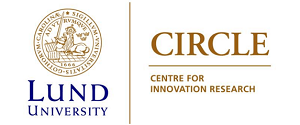No 2006/2: Building RIS in Developing Countries: Policy Lessons from Bangalore, India
Jan Vang () and Cristina Chaminade ()
Additional contact information
Jan Vang: Copenhagen Institute of Technology, Aalborg University, Postal: Institut 6 - Medieteknologi og Ingeniørvidenskab , Lautrupvang 15, 2750 Ballerup, Denmark
Cristina Chaminade: CIRCLE, Lund University, Postal: PO Box 117, Sölvegatan 16, SE-22100 Lund, Sweden
Abstract: This paper sheds light on the role of the regional innovation system in facilitating the Bangalore Software cluster’s transition from a development model based on offering low cost activities/services towards a model based on an independent innovation profile. Recent research has documented that Bangalore has become one of the most important IT clusters outside the US. With noble exceptions the literature addressing the recent transformation of the IT cluster in Bangalore has either interpreted the transformative potentials though a pre-determined ‘negative’ political economy template or through a firm-level analysis. Both types of research tend to ignore the systemic propensities of the cluster within which the firms are embedded and the derived need for policy intervention. This chapter attempts to contribute to reducing these omissions by discussing the role of policy interventions in supporting innovation in the software cluster and, more specifically, the innovation based upgrading strategies of the indigenous SMEs. To attain this goal the chapter applies the so-called regional innovation systems approach. Regional Innovation systems can be seen as a “constellation of industrial clusters surrounded by innovation supporting organizations” (Asheim and Coenen 2005) where focus is on the systemic propensities of the institutional setting and possibilities for selective policy intervention. The recent adaptation of the RIS approach to the Asian context (Asheim and Vang, forthcoming and Chaminade and Vang, forthcoming) is used as a departure point in the discussion. In the context of RIS two important aspects need to be highlighted. Contrary to more traditional approaches to innovation and upgrading a RIS approach stresses that supporting SMEs in their innovation-oriented upgrading process is not only a matter of facilitating the access to technology but of providing what we refer to as soft infrastructure (increase qualification of the human resources, provision of knowledge supportive social capital). In this sense, we critically use the RIS framework to discuss how the hard and soft infrastructure of the RIS and their systemic propensities might influence the innovative performance of the software SMEs located in the Bangalore cluster; and how can the government selectively invest can in the weak and critical nodes of the local infrastructure to support SMEs innovative capabilities and upgrading in general.
Keywords: Sweden; paradox; R&D; growth; entrepreneurship.
JEL-codes: O30
35 pages, March 1, 2006
Full text files
200602_Vang_Chaminade.pdf
Questions (including download problems) about the papers in this series should be directed to Torben Schubert ()
Report other problems with accessing this service to Sune Karlsson ().
RePEc:hhs:lucirc:2006_002This page generated on 2024-09-13 22:16:04.

